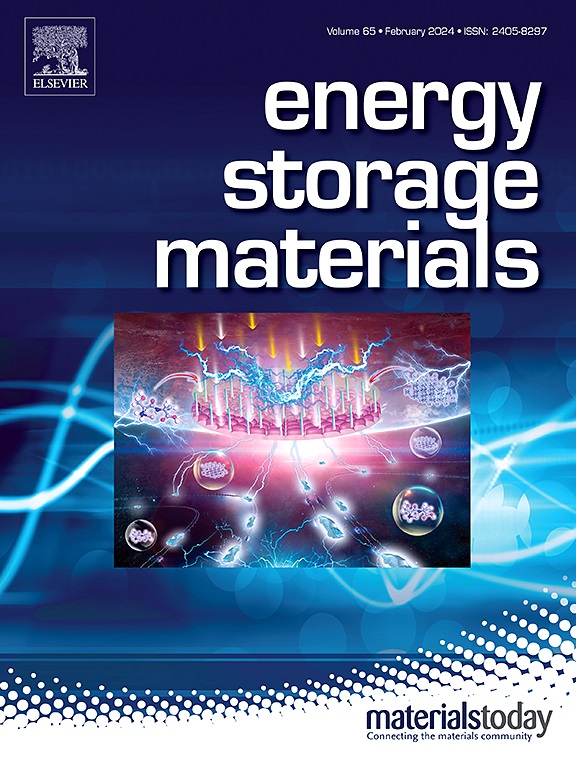Research Trajectory and Horizon of Electrolyte Additives and Separators in Room Temperature Na-S Batteries: A Comprehensive Review
IF 18.9
1区 材料科学
Q1 CHEMISTRY, PHYSICAL
引用次数: 0
Abstract
Room-temperature sodium-sulfur (RT Na-S) batteries have garnered significant attention due to their high energy density and cost-effectiveness, yet their commercialization faces challenges, primarily concerning electrolyte stability and separator performance. To address these issues, recent research has focused on developing advanced electrolyte additives and separator modifications. These innovations are aimed at optimizing the solvation structure of sodium ions, enhancing electrolyte stability, and mitigating the polysulfide shuttle effect, which improves cycle stability. Novel electrolyte additives have shown promise in improving electrolyte stability and reducing polysulfide shuttling, leading to better cycle performance. Functionalized separators have also been effective in capturing polysulfides and promoting their conversion, enhancing both rate performance and cycle life. This review summarizes the latest advancements in electrolyte additives and separators for RT Na-S batteries. By delving into the underlying mechanisms of these innovations, it highlights their potential impacts on battery performance. These efforts have contributed to significant improvements in RT Na-S battery technology, making them more viable for practical applications. Ultimately, the continued development of outstanding performance RT Na-S batteries could lead to advancements in related technologies and broader adoption in various energy storage applications.

室温钠硫电池电解液添加剂和隔膜的研究轨迹与前景综述
室温钠硫(RT Na-S)电池因其高能量密度和成本效益而备受关注,但其商业化面临挑战,主要涉及电解质稳定性和分离器性能。为了解决这些问题,最近的研究重点是开发先进的电解质添加剂和分离器改性。这些创新旨在优化钠离子的溶剂化结构,增强电解质稳定性,减轻多硫化物穿梭效应,从而提高循环稳定性。新型电解质添加剂在提高电解质稳定性和减少多硫化物穿梭方面表现出了良好的前景,从而提高了循环性能。功能化分离器在捕获多硫化物和促进其转化、提高速率性能和循环寿命方面也很有效。本文综述了RT Na-S电池用电解质添加剂和隔膜的最新研究进展。通过深入研究这些创新的潜在机制,它突出了它们对电池性能的潜在影响。这些努力为RT Na-S电池技术的重大改进做出了贡献,使其在实际应用中更加可行。最终,优异性能的RT Na-S电池的持续发展可能会导致相关技术的进步,并在各种储能应用中得到更广泛的应用。
本文章由计算机程序翻译,如有差异,请以英文原文为准。
求助全文
约1分钟内获得全文
求助全文
来源期刊

Energy Storage Materials
Materials Science-General Materials Science
CiteScore
33.00
自引率
5.90%
发文量
652
审稿时长
27 days
期刊介绍:
Energy Storage Materials is a global interdisciplinary journal dedicated to sharing scientific and technological advancements in materials and devices for advanced energy storage and related energy conversion, such as in metal-O2 batteries. The journal features comprehensive research articles, including full papers and short communications, as well as authoritative feature articles and reviews by leading experts in the field.
Energy Storage Materials covers a wide range of topics, including the synthesis, fabrication, structure, properties, performance, and technological applications of energy storage materials. Additionally, the journal explores strategies, policies, and developments in the field of energy storage materials and devices for sustainable energy.
Published papers are selected based on their scientific and technological significance, their ability to provide valuable new knowledge, and their relevance to the international research community.
 求助内容:
求助内容: 应助结果提醒方式:
应助结果提醒方式:


